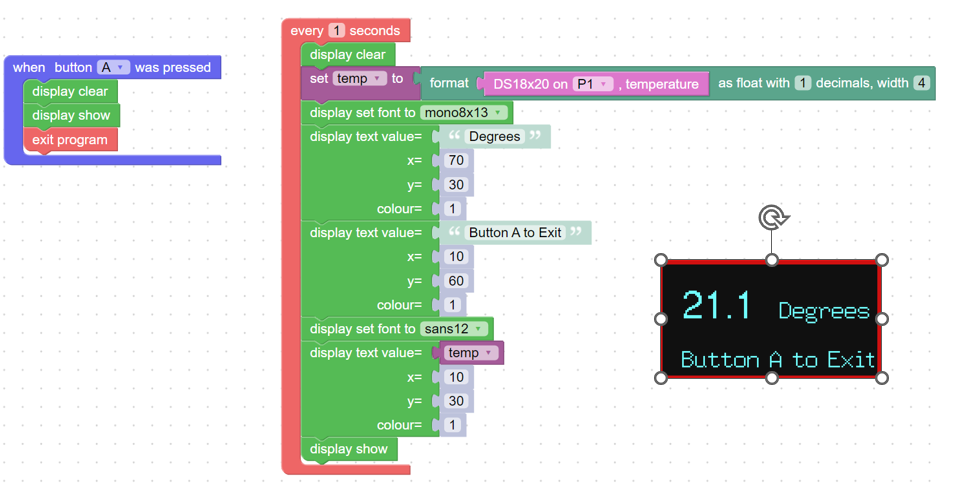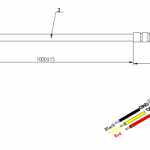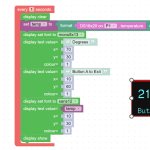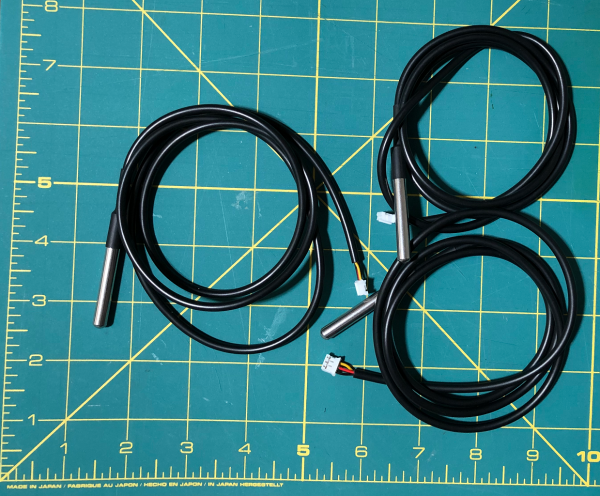Table of Contents
This is a waterproofed version of the DS18B20 temperature sensor. It is an INPUT device.
Handy for when you need to measure something far away, or in wet conditions. While the sensor is good up to 125°C the cable is jacketed in PVC so we suggest keeping it under 100°C.
It is a hybrid analogue/digital device as the analogue temperature reading is sampled within the probe head and transmitted digitally to the Kookaberry.
This is the only peripheral in the Journey Class Kit that is not sourced from DFRobot.
Specification
-
Usable with 3.0V to 5.5V input
-
±0.5°C Accuracy from -10°C to +85°C
-
Usable temperature range: -55 to 125°C (-67°F to +257°F)
-
9 to 12 bit selectable resolution
-
Uses 1-Wire interface- requires only one digital pin for communication
-
Multiple sensors can share one pin
-
Temperature-limit alarm system
-
Query time is less than 750ms
-
Interface is jst 3wire PHR-3 wired as shown below
-
Stainless steel tube 6mm diameter by 50mm long
-
Length: 100cm
Demonstration
Go to the preloaded SenseDS18B20 app to demonstrate sensor operation.
Alternatively, create your own simple KookaBlockly app. Connect a Kookaberry to a PC or Mac, and plug the DS18B20 sensor into socket P1 on the Kookaberry.
Open KookaBlockly and create the programme shown below to display the sensed temperature on the Kookaberry’s screen. The “Press Button B to Exit” code has been added if you wish to save the programme to your Kookaberry and access it from the screen menu. Remember to save is [Title].kby.

How it Works
Sensing Element
The sensing element within the steel tube is a semiconductor that decreases in resistance when exposed to heat.
![]()
It is called a Negative Temperature Coefficient (NTC) device because normal materials increase in resistance as they are heated.
Most conductors will increase in resistance the hotter they become, that’s typical of metals. This occurs because as the atoms and molecules become excited they move around, so it’s harder for the free electrons to get through without a collision. [Thanks to TheEngineeringMindset.com for this explanation and the accompanying video]
The following video tutorial explains all the different types of electrical temperature devices – including the NTC ones
The electronic circuits inside the steel tube
This is a digital sensor, which means that the variation in resistance in the presence of heat is sampled and turned into a digital signal by electronic circuits within the tube containing the NTC sensor.
Because the signal is digital, you don’t get any signal degradation even over long distances. The DS18B20 provides 9 to 12-bit (configurable) temperature readings over a 1-Wire interface.
The DS18B20 can be powered with only two wires (using what is called parasitic powering) but we feed power from the Kookaberry board to the sensor over two wires (Black and Red), and bring the signal back over a single wire (Yellow).
Wire connections
Power is supplied via the Black(Ground) and 3 volt VDD(Red) from the Kookaberry board. The digital signal from the sensor travels on the Signal(Yellow) lead






